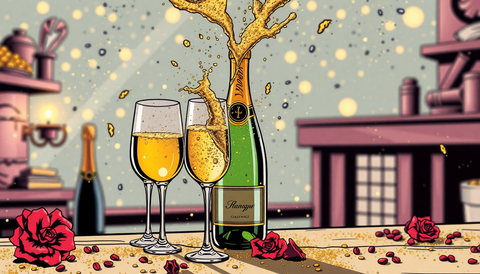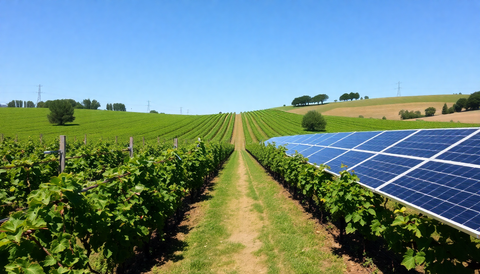From Humble Cellar to Home Haven: Storing Wine Like a Professional in 2025
The world of wine is a journey of discovery, and like any great expedition, it requires the right preparation. For wine lovers in 2025, the dream of having a personal cellar that rivals professional establishments is no longer an unattainable fantasy. Proper wine storage is not merely about keeping your bottles safe; it's about nurturing them, allowing them to evolve gracefully, and ensuring that when you finally uncork that special vintage, it's at its absolute peak. This comprehensive guide will delve deep into the intricacies of wine storage, transforming your home into a sanctuary worthy of any sommelier's approval.
The Four Horsemen of Wine Preservation: Temperature, Humidity, Light, and Stability
Think of these four elements as the guardians of your wine's integrity. Neglect any one, and you risk compromising years, even decades, of careful aging. Let's break down each critical factor:
1. The Crucial Role of Temperature: The 55°F (13°C) Sweet Spot
Temperature is the undisputed king of wine storage. The ideal temperature for long-term wine storage hovers around 55°F (13°C). However, the most vital aspect is consistency. Wild temperature swings are far more damaging than a slightly warmer or cooler, but stable, environment.
- The Perils of Heat: Elevated temperatures act as an accelerant for a wine's aging process. Imagine your wine being rushed through its development; fruit flavors can become muted, replaced by baked or stewed notes. At extreme temperatures, the wine can literally cook, irrevocably damaging its delicate balance and aromas. Expansion of the liquid can also lead to seepage past the cork.
- The Chill Factor: While generally less harmful than heat, prolonged exposure to very cold temperatures (below 45°F or 7°C) can significantly slow down the aging process, preventing the development of desirable complex characteristics. In freezing conditions, the water content in the wine can expand, potentially pushing out the cork or even cracking the bottle.
- The Rhythm of Stability: The most significant threat is not a static temperature, but rather the constant ebb and flow. When wine heats up, it expands; when it cools, it contracts. These cycles can force the cork in and out, compromising its seal and allowing precious oxygen to infiltrate the bottle, leading to oxidation and spoilage. Aim for a stable environment, even if it deviates slightly from the 55°F ideal, over a fluctuating one that swings between extremes.
For the serious collector, the pinnacle of wine storage is a climate-controlled wine cellar or a specialized wine refrigerator. These units are engineered to provide a consistent, optimal environment, replicating the conditions of the world's most revered underground cellars.
2. Humidity: The Cork's Best Friend
The ideal humidity range for wine storage is between 50% and 70%. This might seem like a minor detail, but it's vital for the health of your wine, especially those sealed with natural corks.
- Cork Health: A cork is a natural, porous material. If the surrounding air is too dry, the cork will inevitably dry out, shrink, and become brittle. A compromised cork is a direct gateway for oxygen, leading to premature aging and the dreaded "cork taint." Maintaining adequate humidity keeps the cork pliable and ensures a tight seal.
- Label Longevity: While the wine itself is the priority, proper humidity also helps preserve the paper labels on your bottles, which can be important for identification, resale value, and the overall aesthetic of your collection.
In dry climates, a humidifier or a simple bowl of water placed strategically can help maintain the necessary moisture levels. Conversely, if your storage area is prone to excessive dampness (above 70%), a dehumidifier may be necessary to prevent mold growth and preserve your labels.
3. The Baneful Influence of Light
Light, particularly ultraviolet (UV) radiation, is a silent saboteur of wine. Even brief exposure to sunlight or fluorescent lights can initiate detrimental chemical reactions within the wine.
- The Process of Degradation: UV rays can break down the complex molecules responsible for a wine's aroma and flavor, leading to what is known as "light strike." This often results in an unpleasant, almost sulfuric or wet cardboard-like aroma and a loss of vibrancy in the taste.
- Darkness as Sanctuary: The best place for your wine is in complete darkness. Think of it as tucking your wine away for a peaceful slumber. Avoid storing bottles near windows, under bright lamps, or in areas with constant artificial light.
- Protective Measures: The dark glass used for most wine bottles offers a degree of protection, but it's not foolproof. If your storage area requires lighting, opt for low-intensity, UV-filtered bulbs and ensure they are only used when you are actively accessing your collection.
4. Vibration: The Subtle Agitator
While less immediately destructive than temperature or light, persistent vibration can negatively impact wine over time. The microscopic sediment found in many older wines is a natural byproduct of the aging process. Constant shaking can disturb these delicate particles, potentially clouding the wine and affecting its texture and clarity.
- Minimize Mechanical Disturbance: Keep your wine collection away from vibrating appliances such as washing machines, dryers, refrigerators, or stereo systems. Even the hum of a busy road nearby can contribute to subtle vibrations.
- Secure Storage Solutions: Invest in sturdy, well-constructed wine racks that do not wobble or shift. This ensures bottles are stored securely and minimizes any disturbance when bottles are added or removed.
Elevating Your Storage: Beyond the Basics
Once you have a solid grasp of the fundamental storage principles, consider these additional strategies to perfect your home wine cellar:
The Horizontal Hold: A Cork's Embrace
For wines sealed with corks, storing bottles horizontally is non-negotiable. This position ensures that the wine remains in constant contact with the cork, keeping it moist and preventing it from drying out. A dry cork is a compromised cork, and a compromised cork spells disaster for your wine.
While screw-cap and synthetic-corked wines are less susceptible to drying issues, horizontal storage remains the standard for most wine collections. It optimizes space, allows for easy viewing of labels, and maintains a uniform aesthetic.
Tailoring Storage to Your Wine's Destiny
Not all wines are created equal, and their storage needs can vary slightly:
- Wines Destined for Aging: These are typically wines with good structure, high acidity, and robust tannins that benefit from extended maturation. They require the most stringent adherence to ideal storage conditions – consistent 55°F, 70% humidity, darkness, and minimal vibration.
- Wines for Short-Term Enjoyment: If you plan to drink a bottle within the next year or two, the storage requirements are less critical, but still important. A cool, dark place with relatively stable temperatures, away from direct light and heat sources, will suffice. Avoid storing these wines on top of the refrigerator or near a stove.
The Art of the Wine Rack: Functionality Meets Aesthetics
Wine racks are more than just storage furniture; they are an integral part of a well-organized wine collection.
- Structural Integrity: Ensure your racks are robust and capable of holding the weight of multiple bottles securely without sagging or tipping.
- Accessibility and Visibility: A well-designed rack allows you to easily identify and retrieve the bottle you desire without disrupting your entire collection.
- Space Optimization: Whether you have a dedicated cellar or a small apartment, there's a rack system to maximize your available space, from modular cubes to wall-mounted solutions.
Navigating the Kitchen Conundrum
The kitchen is a hub of activity, but it's often one of the least suitable places for long-term wine storage. Its proximity to heat sources (ovens, stovetops, dishwashers), fluctuating temperatures, and high humidity levels make it a risky environment.
However, for wines intended for immediate consumption (within a few weeks), a cupboard or pantry away from direct heat and light might be acceptable. If you must store wine in the kitchen, select a location that is as cool and dark as possible, and crucially, away from the heat generated by appliances.
The Modern Marvel: Investing in a Wine Refrigerator
In 2025, a wine refrigerator has become an indispensable tool for many wine enthusiasts. These appliances offer a controlled environment that precisely mimics the ideal conditions of a traditional cellar, but with greater convenience and often at a lower cost.
- Temperature Precision: Set your desired temperature and let the unit maintain it with unwavering accuracy. Many units offer dual-zone capabilities, allowing you to store different types of wine at their optimal temperatures simultaneously.
- Humidity Control: While not all units excel in this area, many modern wine refrigerators incorporate features to help manage humidity levels, protecting your corks.
- Vibration Dampening: Wine refrigerators are designed with quiet, efficient cooling systems that minimize vibrations, ensuring your wine ages undisturbed.
- UV Protection: The glass doors of most wine refrigerators are treated to block harmful UV rays, safeguarding your wine from light damage.
From compact, under-counter models perfect for a budding collection to large, freestanding units that can house hundreds of bottles, there's a wine refrigerator to suit every need and budget.
The Journey of Preservation: A Rewarding Endeavor
Storing wine at home like a sommelier is an act of dedication and a celebration of the vintner's art. It's about patience, attention to detail, and creating the perfect conditions for wine to reveal its true character. By mastering the principles of temperature, humidity, light, and stability, and by employing smart storage solutions, you can ensure that every bottle in your collection is a testament to the time and care invested in its preservation. So, create your sanctuary, protect your treasures, and look forward to the pleasure of uncorking a perfectly aged wine, a reward truly worth the effort.




Comments (0)
There are no comments for this article. Be the first one to leave a message!